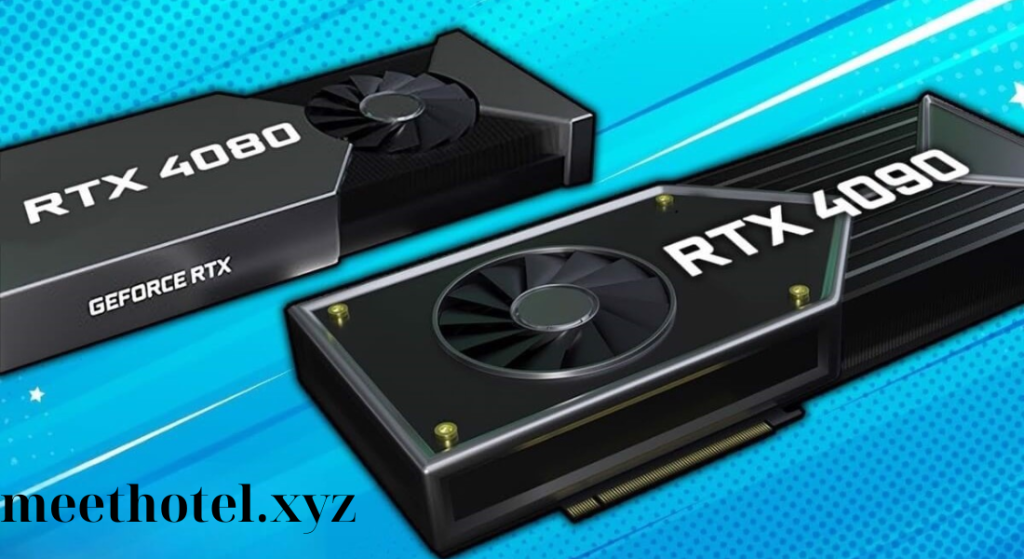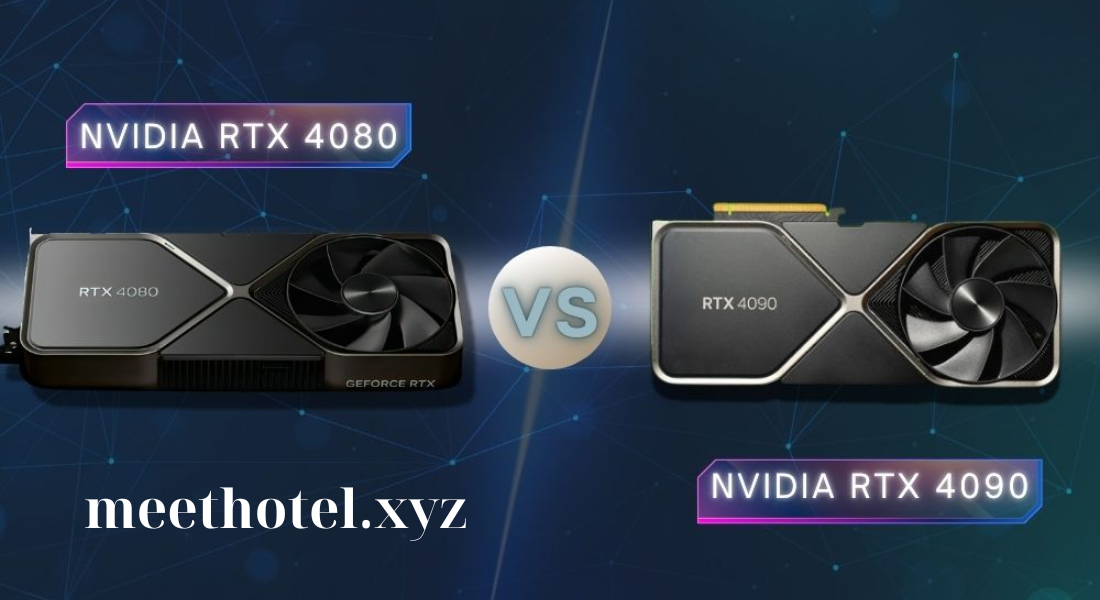Introduction
NVIDIA’s recent release of the RTX 4090 and RTX 4080 graphics cards has sparked excitement and curiosity among gamers, content creators, and tech enthusiasts alike. As the latest entries in NVIDIA’s powerful lineup of GPUs, these high-performance cards promise to deliver unprecedented speed, graphics quality, and efficiency. With both the RTX 4090 and RTX 4080 claiming to push the boundaries of gaming and creative workflows, users now face a crucial decision: which GPU offers the best combination of power, features, and value?
Choosing between the RTX 4090 and the RTX 4080 can be a challenge, especially with each card boasting unique strengths suited to different types of users. The RTX 4090, often seen as the pinnacle of NVIDIA’s technology, promises unmatched gaming experiences, exceptional rendering capabilities, and future-proof specifications. Meanwhile, the RTX 4080, positioned slightly below the 4090, provides a compelling balance of performance and affordability, appealing to users who seek top-notch graphics power without the hefty price tag.
In this guide, we break down every important aspect of the RTX 4090 vs. RTX 4080 to help you make the best decision. From in-depth performance benchmarks to detailed comparisons of features, power efficiency, and pricing, this article will equip you with the insights needed to choose the GPU that aligns with your gaming or professional needs.
1. Specifications Overview: RTX 4090 vs. RTX 4080
When comparing the RTX 4090 and RTX 4080, it’s crucial to start with their core specifications. Here’s a quick look:
- RTX 4090:
- CUDA Cores: 16,384
- Base Clock: 2.23 GHz
- Boost Clock: 2.52 GHz
- Memory: 24GB GDDR6X
- TDP: 450W
- RTX 4080:
- CUDA Cores: 9,728
- Base Clock: 2.21 GHz
- Boost Clock: 2.51 GHz
- Memory: 16GB GDDR6X
- TDP: 320W
The sheer difference in CUDA cores and memory shows that the RTX 4090 is geared for heavy, intensive workloads. However, the RTX 4080’s specs still hold significant power for most high-end applications.
2. Performance Benchmarks: Which Card Delivers More Power?
In performance tests, the RTX 4090 consistently outpaces the RTX 4080, particularly in high-resolution gaming and demanding creative workloads.
- Gaming: At 4K, the RTX 4090 can consistently push frame rates well above 100 FPS in the latest AAA titles, while the RTX 4080 falls slightly behind, averaging between 80-90 FPS. The RTX 4090’s additional CUDA cores and memory allow for a smoother experience in ultra-settings.
- Productivity and Rendering: For content creators, the RTX 4090 shines in rendering, 3D modeling, and video editing. Applications like Blender and Adobe Premiere show marked improvement, with up to a 25% performance increase over the RTX 4080.
In terms of raw power, the RTX 4090’s larger CUDA core count and higher memory make it the frontrunner. However, the RTX 4080 still provides excellent performance and may be more than sufficient for gamers and moderate creators.
3. Power Consumption and Heat Management
With a TDP of 450W, the RTX 4090 demands significant power, potentially requiring an 850W or even 1000W power supply. The RTX 4080, in contrast, is more energy-efficient with a TDP of 320W. For those with existing high-wattage setups, the RTX 4090 may be manageable. However, users with mid-range systems will find the RTX 4080 easier to integrate.
Heat management is also a critical factor. The RTX 4090, while powerful, generates substantial heat and typically requires robust cooling solutions, including possibly aftermarket options. The RTX 4080’s lower TDP allows for simpler cooling setups, making it a more practical option for smaller cases.
4. Price Comparison and Value for Money
The RTX 4090, as expected, carries a premium price tag, often retailing around $1,600 or higher. The RTX 4080, priced closer to $1,200, presents a more budget-friendly option without a significant compromise in performance for many applications.
For gamers prioritizing performance at 1440p or 4K, the RTX 4080 offers a reasonable price-to-performance ratio. However, for users needing maximum power for high-level rendering and AI tasks, the RTX 4090’s added expense could be justified.
5. Features and Innovations: What Sets Each Card Apart?
Both the RTX 4090 and RTX 4080 bring NVIDIA’s latest technologies, such as DLSS 3.0, improved ray tracing, and upgraded AI capabilities. However, certain features can impact your choice depending on your needs:
- DLSS 3.0: Both GPUs support DLSS 3.0, enhancing frame rates by rendering lower-resolution frames and using AI to upscale. The RTX 4090’s higher compute capability allows for smoother DLSS performance, especially in intensive ray-traced scenes.
- Ray Tracing Performance: The RTX 4090’s ray-tracing cores provide a slight advantage over the 4080, achieving better results in titles optimized for ray tracing.
- AV1 Encoding: Both cards include AV1 encoding support, a significant advantage for streamers and content creators who require efficient, high-quality video encoding.

6. RTX 4090 vs. RTX 4080: Gaming Experience
In gaming scenarios, both GPUs excel but cater to slightly different needs. The RTX 4090 handles 4K gaming with ease, pushing past 120 FPS in games like Cyberpunk 2077 and Red Dead Redemption 2 with ray tracing enabled. The RTX 4080, while slightly lower in output, still achieves excellent frame rates in these titles, maintaining a solid 90 FPS or higher.
For VR enthusiasts, the RTX 4090’s additional cores and power provide an ultra-smooth experience, especially in visually demanding VR titles. However, if you primarily game on a 1440p monitor, the RTX 4080 can deliver nearly identical performance at a lower cost.
7. Content Creation: Which GPU Benefits Creative Professionals?
While the RTX 4080 is undoubtedly powerful, the RTX 4090 offers superior advantages for intensive creative tasks.
- 3D Modeling: Artists using tools like Autodesk Maya and Blender will find the RTX 4090’s expanded cores and memory significantly cut down on rendering times. The RTX 4080 is also a strong contender here but may fall short in ultra-complex scenes.
- Video Editing: For video editors, the RTX 4090’s ability to handle multiple 8K streams is a time-saver, making it an ideal choice for professionals working with high-res footage.
For moderate editing or 3D work, the RTX 4080 still offers exceptional performance and could be a more cost-effective choice for freelancers and casual creators.
8. Future-Proofing: Which Card Will Last Longer?
Future-proofing is often a critical consideration when investing in high-end hardware. The RTX 4090, with its robust specs, is likely to maintain relevance for a longer time, particularly as games and software evolve to leverage increased CUDA cores and higher memory capacities. However, the RTX 4080, with its lower price, might offer a more accessible option for users planning on periodic upgrades rather than investing in a single high-cost GPU.
Conclusion: RTX 4090 vs. RTX 4080 – Which One Should You Buy?
Ultimately, the choice between the RTX 4090 and RTX 4080 depends on your needs and budget. If you’re a gamer or content creator seeking unparalleled performance and have the budget for it, the RTX 4090 delivers unmatched power and future-proofing. However, if you’re looking for a balanced option that provides excellent performance in both gaming and productivity without the higher price and power demands, the RTX 4080 is an outstanding alternative.
For those who want the best without compromise, the RTX 4090 is the clear winner. But for users looking for a more budget-friendly option with high performance, the RTX 4080 offers an excellent balance of power, efficiency, and value.
